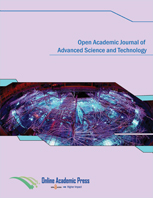Comparison of Photochemical Tissue Binding using Rose Bengal Dye and Skin Sutures for Closure of Incisional Cutaneous Wound in a Rabbit Model
DOI:
https://doi.org/10.33094/5.2017.2018.21.25.31Keywords:
Photochemical tissue bonding, Rose bengal dye, Conventional suturing, Collagen fibers.Abstract
Wound healing is a complicated series of inter-related events which are mediated in their diverse phases in a broad range of cellular processes coordinated chemically as well as hormonally. It is typified by sequence of self-determining and overlapping events. Traditional wound closure methods, such as staples and sutures, have numerous drawbacks, including the possible occurrence of inflammation, irritation, infection, wound gapes, and leakage. The present study was therefore designed to evaluate the efficacy and potential of photochemical tissue bonding in the wound healing. For this purpose, 20 adult healthy, rabbits of either sex were selected. A full thickness incised wound on ventral midline was created on each rabbit. In animals of group A, incised wounds were exposed to monochromatic green light (532 nm) after application of dye (Rose Bengal) on the wound surface for 200 seconds whereas in group B the closure of the wounds were carried out using 2/0 silk suture material by interrupted horizontal mattress pattern. Healing was checked on daily basis through observation and measurements. There was a significant difference in swelled areas of wounds sutured by silk and healed with PTB. When horizontal mattress pattern was used, swelling of sutured area was significantly more prominent with silk .Among two wound closing techniques, more swelled area was observed in wounds sutured with horizontal mattress than the wounds closed with PTB. The healing time of photochemical tissue bonding treated wounds were 3 to 4 days while the healing time in sutures was 7 days. According to the histopathological evaluation of the collagen fibers photochemical tissue bonding resulted in a significantly dense collagen fiber as compared to the conventional suturing for closure of skin wounds in rabbits. Photochemical tissue bonding resulted in a collagen contents of 82.17±1.8 whereas in conventional suturing 78.50±1.5 collagen contents were observed. Photochemical tissue bonding resulted in epidermis thickness 125.1 ± 6.5 whereas in conventional suturing the epidermis thickness was 116.2 ± 3.1. Photochemical tissue bonding resulted in a dermis thickness of 120.9 ±7.7 whereas the thickness of dermis in conventional suturing was 113.7 ± 5.6.




